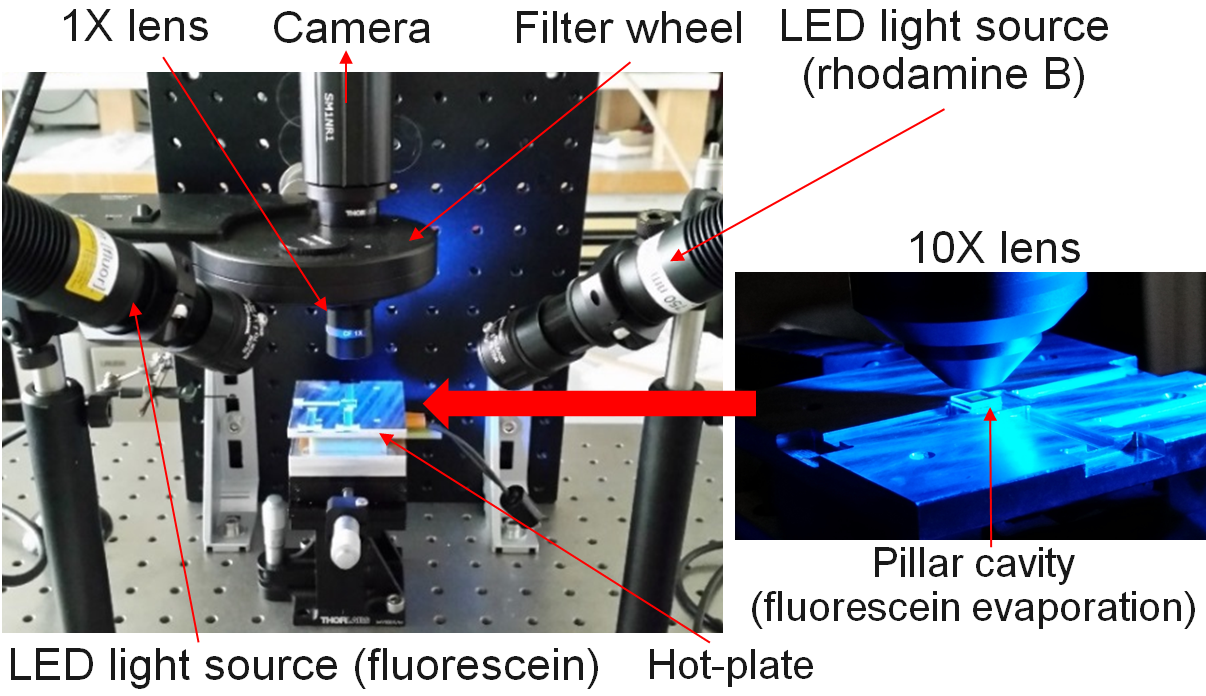LB modelling of colloids drying to create nano-porous structures
The lattice Boltzmann (LB) method, a mesoscopic method based on discrete kinetic theory, has become a powerful tool in simulating complex fluid phenomena, such as turbulent flow, porous flow, multiphase flow, heat flow and micro-flow, etc.


In our group, a hybrid thermal multiphase LB model is implemented with the help of Los Alamos National Laboratory (LANL), which is capable of simulating temperature gradient induced liquid-vapor phase change. This model will be applied to study colloids drying in cavity, in order to create better nano-porous structures (“thermal necks”) for enhancing heat conduction efficiency (Fig1). This project is in collaboration with Advanced Micro Integration team in International Business Machines (IBM, Zurich), who mainly work on designing experiments (Fig2). And for the application, it is to better remove the heat generated in computer chips.


At present, the LB model is being used to simulate non-isothermal liquid evaporation in cavity with spirally arranged pillars. Current results show good agreement with experiment both qualitatively (evaporation pattern, Fig3) and quantitatively (liquid mass with time, Fig4). For next steps, different evaporation patterns and colloids drying will be studied.
For more information, please contact